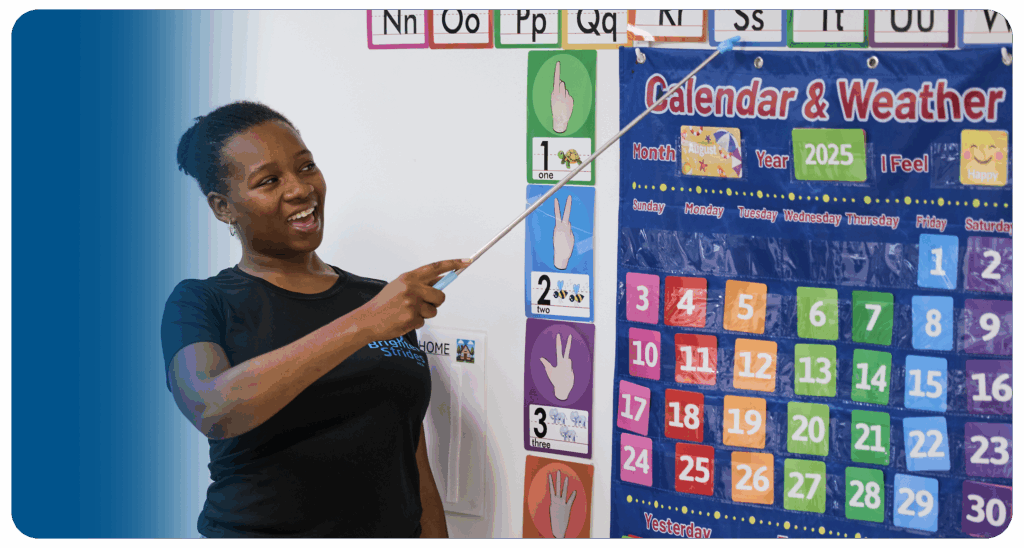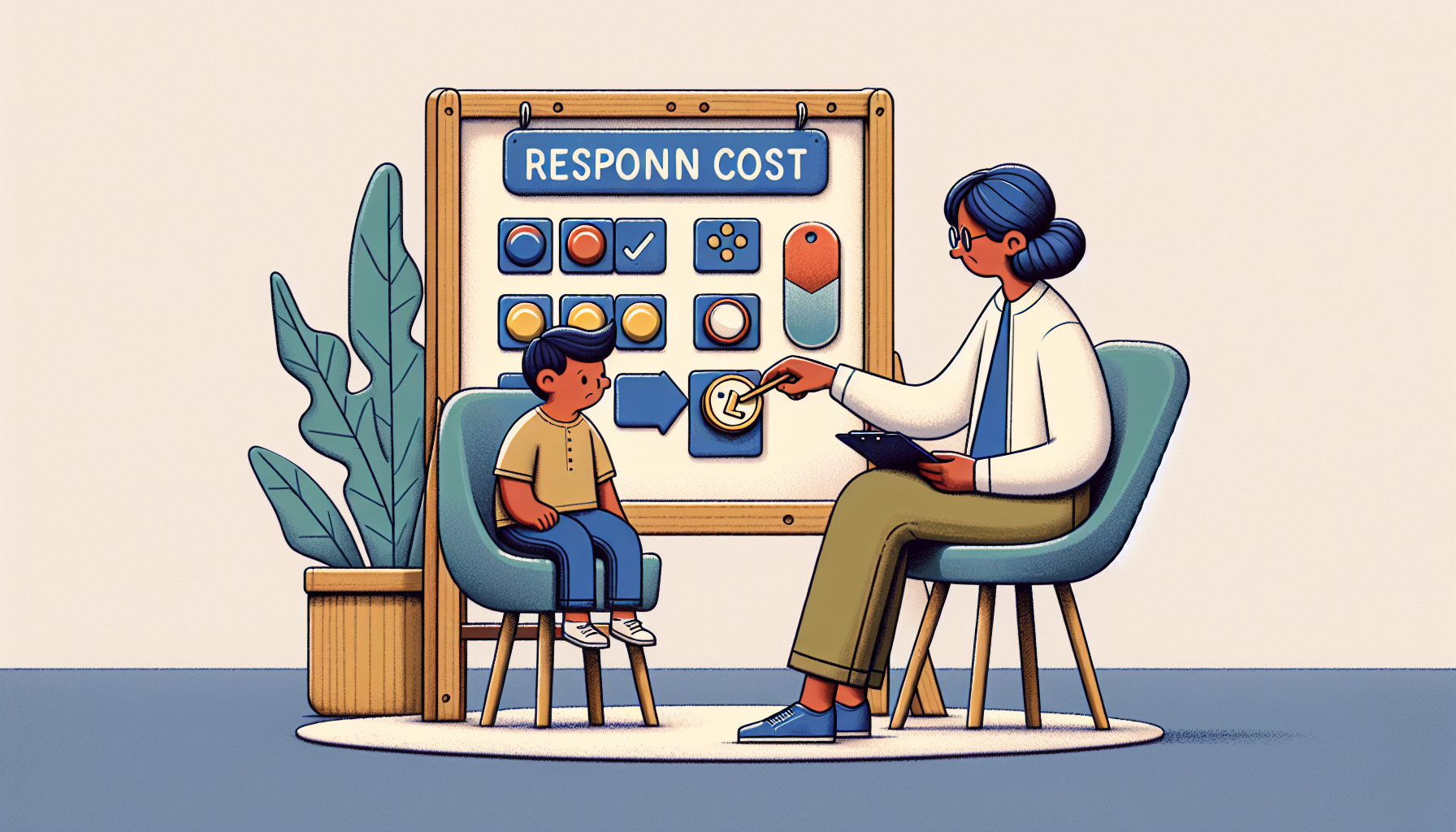Understanding Response Cost in ABA Therapy
Response cost is a behavioral intervention technique used in Applied Behavior Analysis (ABA) therapy to decrease or eliminate undesirable behaviors by removing or reducing a preferred item or privilege following the occurrence of a targeted behavior. The purpose of response cost is to teach individuals the concept of cause and effect and help them understand the consequences of their actions.
The implementation of response cost involves several key components. These components include:
Identifying Target Behaviors
To effectively implement response cost, it is important to identify the specific behaviors that need to be addressed. These behaviors are typically those that are considered undesirable or disruptive. By clearly defining the target behaviors, therapists can create interventions that are tailored to the individual’s needs and goals.
Establishing Reinforcement Systems
Response cost is often used in conjunction with a token economy system in ABA therapy. In a token economy, individuals earn tokens or symbols as a form of positive reinforcement for engaging in desired behaviors. These tokens can be exchanged for a variety of reinforcers, such as preferred activities, privileges, or tangible rewards. By establishing a reinforcement system, therapists can reinforce positive behaviors while simultaneously reducing the occurrence of negative behaviors.
Setting Up Procedures
The successful implementation of response cost relies on clear procedures and guidelines. Individuals must understand the rules, expectations, and consequences associated with their behavior. Consistency in the application of response cost procedures is crucial to ensure that the individuals make the necessary connections between their behavior and the consequences that follow. Communication with the individual and their caregivers is essential to ensure everyone is on the same page and understands the purpose and implementation of response cost.
By understanding the definition and purpose of response cost in ABA therapy, as well as its key components, therapists can effectively address undesirable behaviors and promote the development of more appropriate behaviors. The implementation of response cost, along with other behavioral principles and techniques, can lead to positive outcomes in behavior management and skill acquisition.
Implementation of Response Cost
When it comes to utilizing response cost in ABA therapy, several key steps must be followed to ensure its effective implementation. These steps include identifying target behaviors, establishing a reinforcement system, and setting up response cost procedures.
Identifying Target Behaviors
The first step in implementing response cost is to identify the target behaviors that need to be addressed. This involves a thorough assessment and analysis of the individual’s behaviors and determining which ones are undesirable or interfere with their daily functioning. By clearly identifying these target behaviors, ABA therapists can create specific intervention plans tailored to the individual’s needs.
Establishing Reinforcement Systems
Once the target behaviors have been identified, the next step is to establish a reinforcement system. In ABA therapy, reinforcement is a vital component in shaping and modifying behavior. Positive reinforcement is often used to increase desired behaviors, while response cost employs negative punishment to decrease or eliminate undesirable behaviors.
Response cost is frequently utilized alongside a token economy system in ABA therapy. This system involves rewarding individuals with tokens or points for exhibiting appropriate behaviors. However, in response cost, tokens or points are removed or reduced as a consequence of the targeted behavior [3]. This reduction serves as a deterrent and decreases the likelihood of the behavior occurring again.
Setting Up Procedures
The final step in implementing response cost is setting up the necessary procedures to ensure consistency and effectiveness. This involves establishing clear rules, expectations, and consequences associated with the target behaviors. Individuals must understand what is expected of them and the potential consequences they may face if they engage in the undesirable behavior.
ABA therapists work closely with clients, their families, and other caregivers to ensure everyone involved understands and follows the established procedures. Communication and collaboration are crucial in implementing response cost effectively.
By following these steps and implementing response cost procedures, ABA therapists can help individuals decrease or eliminate undesirable behaviors, ultimately promoting more adaptive and functional behaviors. It is important to note that response cost should always be implemented ethically, with consideration for the individual’s well-being and with the guidance of trained professionals.
Behavioral Principles of Response Cost
When it comes to understanding response cost in ABA therapy, it is essential to grasp the underlying behavioral principles at play. This section explores two key aspects: negative punishment and the association with undesirable behaviors.
Negative Punishment
Response cost is a form of negative punishment, a behavioral principle that involves the removal of a stimulus as a consequence of poor behavior. In the context of ABA therapy, response cost aims to decrease the occurrence of targeted behaviors by associating them with a negative outcome. The removal of a specific reinforcer or privilege serves as the penalty for the undesired behavior.
By utilizing negative punishment, individuals learn to recognize the consequences of their actions and understand that engaging in undesirable behaviors leads to the loss of something they value. This association helps motivate them to engage in more appropriate and desirable behaviors in the future [3].
Association with Undesirable Behaviors
Response cost in ABA therapy is specifically designed to address undesirable behaviors. It involves removing a specific reinforcer or token immediately following the occurrence of the unwanted behavior. This creates a clear association between the undesired behavior and the loss of a previously earned reward or token.
By linking the negative consequence of losing a reinforcer or token to the occurrence of the undesired behavior, individuals develop an understanding that engaging in such behaviors will result in the removal of a valued item. This association helps shape their behavior and encourages them to engage in more socially appropriate and desirable actions.
Understanding the behavioral principles of response cost is crucial for effective implementation in ABA therapy. By utilizing negative punishment and establishing clear associations between undesired behaviors and the loss of reinforcers or privileges, response cost can effectively decrease undesirable behaviors and promote positive behavior change.
Effectiveness and Benefits
Response cost, as a behavioral intervention technique in ABA therapy, offers several benefits in modifying behavior and promoting positive outcomes. By implementing response cost, undesirable behaviors can be effectively decreased, while motivation to engage in desirable behaviors can be increased.
Decreasing Undesirable Behaviors
One of the primary goals of response cost in ABA therapy is to decrease or eliminate undesirable behaviors. This is achieved by removing or reducing a preferred item or privilege following the occurrence of a targeted behavior. By associating the undesirable behavior with the loss of a preferred item or privilege, individuals learn to make more appropriate choices to avoid the negative consequences.
The use of response cost procedures involves identifying target behaviors, establishing a reinforcement system, and setting up response cost procedures such as removing or reducing a previously earned reinforcer when the target behavior occurs. This systematic approach helps individuals understand the cause and effect relationship between their actions and the consequences they experience.
Increasing Motivation
In addition to reducing undesirable behaviors, response cost can also increase motivation for individuals to engage in desirable behaviors. By implementing a token economy system alongside response cost, correct responses are reinforced, and tokens or rewards are earned [3]. This creates a positive incentive for individuals to actively participate and demonstrate the desired behaviors, as they understand that engaging in these behaviors leads to the accumulation of rewards.
By utilizing response cost in conjunction with positive reinforcement, individuals in ABA therapy can develop a better understanding of cause and effect, learn to make choices that result in positive outcomes, and enhance their motivation to engage in desirable behaviors. These motivational aspects play a crucial role in promoting the acquisition and maintenance of new skills and behaviors.
Overall, response cost in ABA therapy offers effectiveness and benefits in terms of decreasing undesirable behaviors and increasing motivation. By implementing this technique consistently, individuals can learn to make more adaptive choices, understand the consequences of their actions, and actively engage in behaviors that lead to positive outcomes.
Ethical Considerations in Response Cost
When implementing response cost in ABA therapy, it is crucial to carefully consider the ethical implications and potential concerns associated with this behavior modification technique. Balancing the benefits and potential drawbacks is essential to ensure ethical implementation and effective outcomes. Two key ethical considerations in response cost are consistency and communication, as well as monitoring and adjustments.
Consistency and Communication
Response cost should always be implemented in a supportive and compassionate manner, with a focus on teaching alternative behaviors and providing appropriate opportunities for reinforcement. Clear guidelines and expectations should be established, defining the specific behaviors that may result in the loss of a token or reinforcer. This clarity helps individuals understand the link between their actions and the consequences that follow.
Consistency is crucial in response cost interventions. It is important to apply the response cost consistently across all relevant situations and individuals involved in the therapy. Inconsistencies can lead to confusion and undermine the effectiveness of the intervention. Additionally, open and ongoing communication with parents or caregivers throughout the therapy process is paramount. This ensures that everyone is on the same page and understands the rationale behind the response cost intervention.
Monitoring and Adjustments
Regular monitoring and adjustments are essential to ensure the effectiveness and ethical implementation of response cost in ABA therapy. Ongoing assessment and evaluation of the intervention’s impact on the individual’s behavior and progress are necessary. This allows for modifications to be made as needed, taking into account the individual’s unique needs and goals.
Monitoring should also include tracking any potential adverse effects or unintended consequences of response cost. One potential risk is that the individual may become frustrated or upset when a reinforcer is removed, potentially leading to an increase in undesired behaviors or a decrease in motivation to engage in desired behaviors [5].
By consistently implementing response cost in an ethical manner, with clear communication, and by monitoring and making adjustments as needed, the potential benefits of this behavior modification technique can be maximized while minimizing any potential negative impacts. Collaboration with an ABA therapist is essential to ensure individualized implementation that aligns with ethical standards and guidelines.
Response Cost Techniques in Practice
In Applied Behavior Analysis (ABA) therapy, response cost techniques are commonly used to address maladaptive behaviors and reinforce positive behaviors in individuals. Three specific techniques frequently employed are token systems, time-outs, and loss of privileges.
Token Systems
Token systems are widely utilized in ABA therapy to reinforce positive behavior and promote skill development, particularly in individuals with autism. These systems incorporate tokens or symbols as immediate rewards for desired behaviors, which can later be exchanged for preferred activities, privileges, or tangible rewards.
Operating on the principles of operant conditioning and positive reinforcement, token economies aim to strengthen desirable behaviors by providing tokens as immediate rewards. These tokens serve as a visual representation of progress and reward accumulation, motivating individuals to continue engaging in positive behaviors.
Implementing a token system involves defining target behaviors and assigning specific tokens for their occurrence. Consistency in rewarding desired behaviors helps individuals understand expectations and reinforces positive habits. Over time, individuals learn the connection between their actions and the positive outcomes they can achieve through the accumulation of tokens [4].
Time-Outs
Time-outs, another response cost technique, involve temporarily removing an individual from a reinforcing environment following the occurrence of maladaptive behavior. This technique aims to provide a brief period of time away from reinforcement, reducing the likelihood of the undesirable behavior reoccurring [8].
The duration of a time-out can vary depending on the individual and the severity of the behavior. It is crucial to ensure that time-outs are implemented consistently and are not excessively long, as they should serve as a brief interruption to the reinforcement process rather than a form of punishment.
During a time-out, individuals are typically placed in a designated area away from reinforcing stimuli. This allows them to reflect on their behavior and provides an opportunity for self-regulation. It is important to provide clear instructions and expectations regarding the time-out procedure to ensure its effectiveness.
Loss of Privileges
Loss of privileges is another response cost technique used in ABA therapy. This technique involves temporarily removing access to preferred activities, items, or privileges in response to maladaptive behavior. By experiencing the absence of a previously enjoyed privilege, individuals are motivated to modify their behavior to regain access to it.
The specific privileges or activities that are temporarily withheld should be carefully chosen based on their significance to the individual. This technique requires clear communication and consistency to ensure that the individual understands the behavior that led to the loss of privilege and how to regain it through appropriate behavior.
By implementing response cost techniques such as token systems, time-outs, and loss of privileges, ABA therapists can effectively shape behavior and promote positive change in individuals. These techniques work in conjunction with other behavioral interventions to reinforce adaptive behaviors and discourage maladaptive ones, providing structure and motivation for individuals in therapy.
References
- https://www.abtaba.com/blog/response-cost-in-aba
- https://www.apexaba.com/blog/response-cost-in-aba-therapy
- https://www.brightfuturesny.com/post/response-cost-in-aba-therapy
- https://www.apexaba.com/blog/response-cost-in-aba-therapy/
- https://www.supportivecareaba.com/aba-therapy/response-cost
- https://www.goldenstepsaba.com/resources/response-cost-in-aba-therapy
- https://www.adinaaba.com/post/response-cost-for-effective-aba-therapy
- https://elemy.wpengine.com/aba-terms/response-cost




